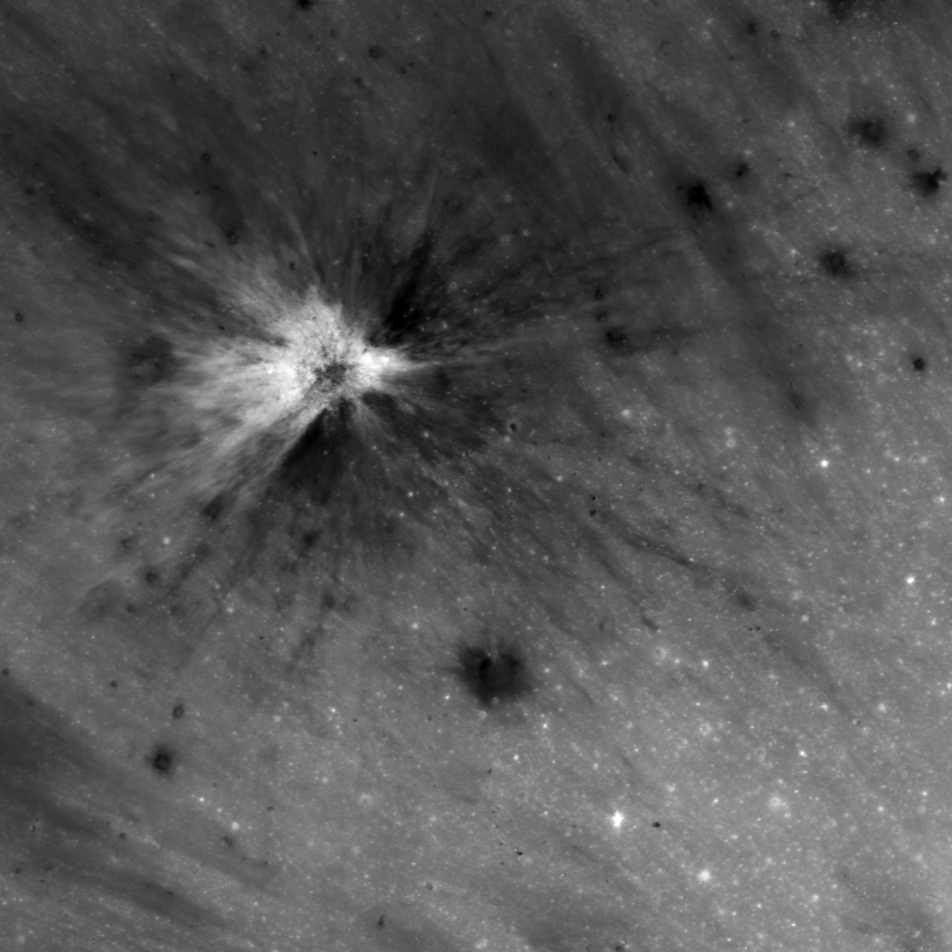
Today's Featured Image highlights the spectacular fresh ejecta from an unnamed crater (~1km in diameter), located northwest (~750 km) of the Orientale basin. Subsequent impacts (possibly including self-secondaries) excavate through the ejecta sheet, leaving small craters (mostly less than 50 m in diameter) and tiny ejecta splashes. Some are lower and others are higher in reflectance than their surroundings.

In the opening image, many small high reflectance craters (~10 m) are clustered at the lower right side of the image, while nearby mid-sized craters (~50 m) are darker than their surroundings. The largest crater's ejecta (center-left in this image) is composed of two layers, the brighter layer on top of the darker layer. These reflectance variations are likely due to the different excavation depths into the low and high reflectance surface and subsurface deposits. The mid-sized craters probably reached the original low reflectance materials below the upper higher reflectance ejecta sheet (from the unnamed ~1km diameter crater). The largest crater likely excavated high reflectance substrate that is also exposed on the unnamed crater's wall.
Imapcts serve as a natural excavation process which helps us to glimpse into the otherwise unreachable geological layers on the Moon.
Related posts
Dark-haloed crater in Mare Humorum
Published by Hiroyuki Sato on 10 June 2014